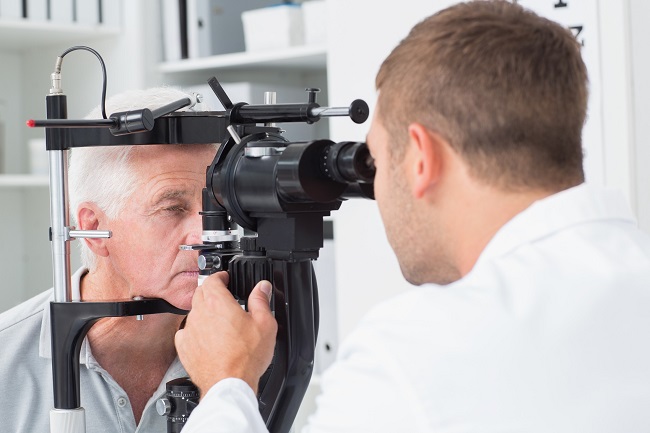
At the Alzheimer’s International Conference (AAIC) in Toronto, a new concept in Alzheimer’s Disease (AD) diagnosis was submitted by researchers from the University of Waterloo. The new non-invasive diagnostic tool is said to be less expensive than mainstream tests, such as PET scans, while potentially diagnosing AD well before the onset of symptoms begins.
The tool was created in partnership between the University of Rochester, Massachusetts general Hospital, the University of British Columbia, the University of Waterloo, Vivocore Inc. and InterVivo Solutions.
The innovative new technology is described as a “non-invasive eye scan that uses polarized light to highlight deposits of amyloid protein,” thought to be a hallmark sign of AD. Professor Melanie Campbell developed the new tool that she claims can detect amyloid deposits behind the patient’s retinas years before a person develops telltale signs of AD-such as cognitive decline.
Presently, finding biomarkers (clues to the presence of AD process in the body) can be very expensive when brain imaging technologies such as an MRI or CT scan are used. The new diagnostic tool could potentially save millions of dollars currently spent on expensive diagnostic procedures, as well as saving on costs for AD research.
According to Campbell, “Polarization imaging is promising for noninvasive imaging of retinal amyloid deposits as a biomarker of Alzheimer’s… The ability to detect amyloid deposits in the retina prior to disease symptoms may be an essential tool for the development of preventative strategies for Alzheimer’s and other dementias,” Campbell concluded.
The research team showed that the eye scans are “as sensitive as other more established methods used to detect Alzheimer’s,” explained the team.
Campbell commented, “Amyloid proteins are made up of fibers with different refractive indices, and they light up just like scotch tape when it’s placed between two polarizing filters.” “While other researchers thought that a dye was needed to make the protein visible, we were able to achieve the same results using optics and additional computer processing,” she said.
Although diagnosis of AD still has a long way to go, early detection of biomarkers via a simple, non-invasive tool that can observe amyloid in the retina could lend itself to earlier and more affordable diagnosis of the disease, long before symptoms occur.
“Early diagnosis is important, especially since treatment options are more limited later in the disease,” said Campbell. “Widely available, inexpensive, early detection of amyloid would help researchers develop more effective treatments before the onset of symptoms.”
To learn more about Alzheimer’s caregiving, and Alzheimer’s prevention & treatment, join AlzU.org today.






